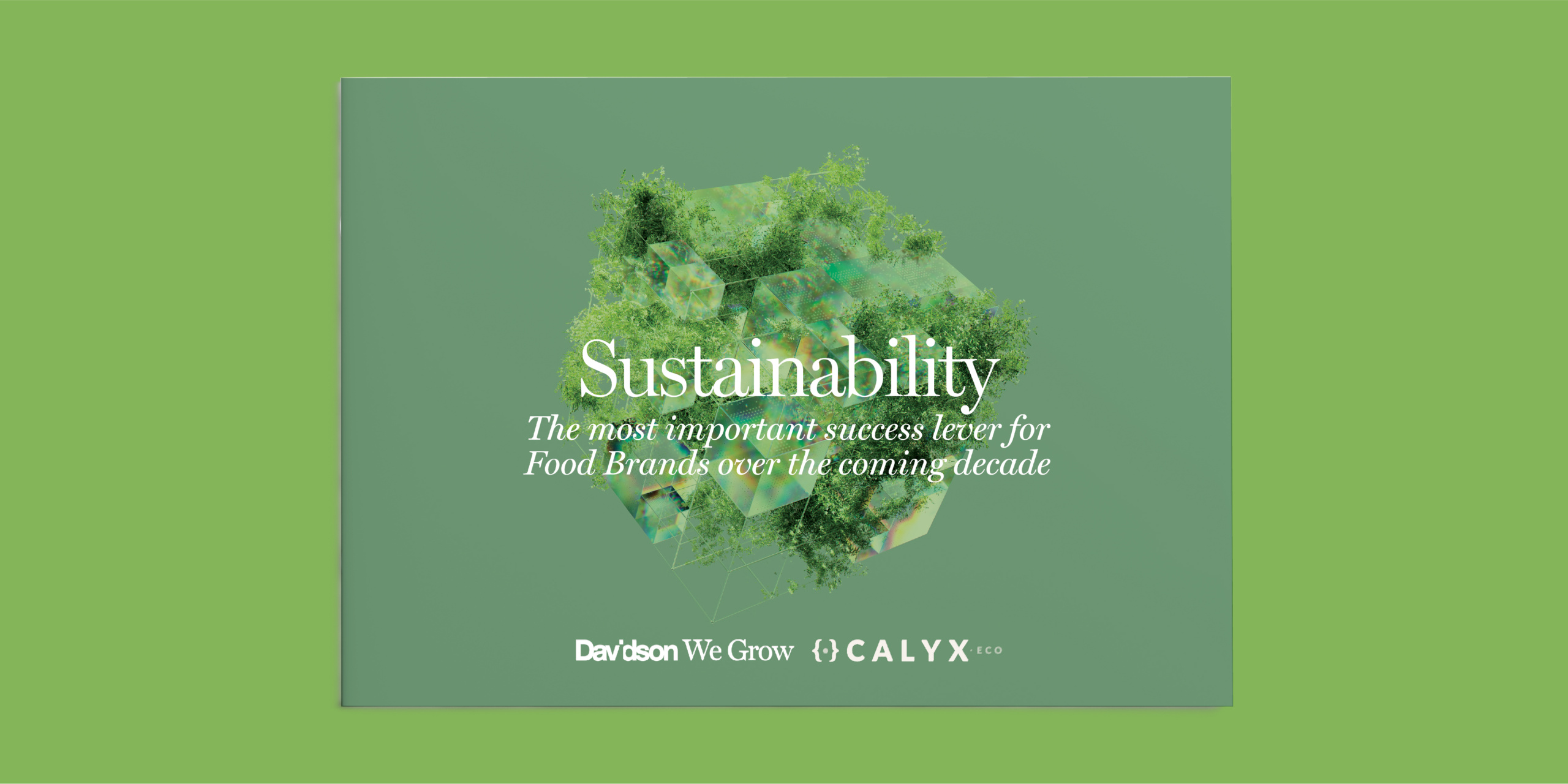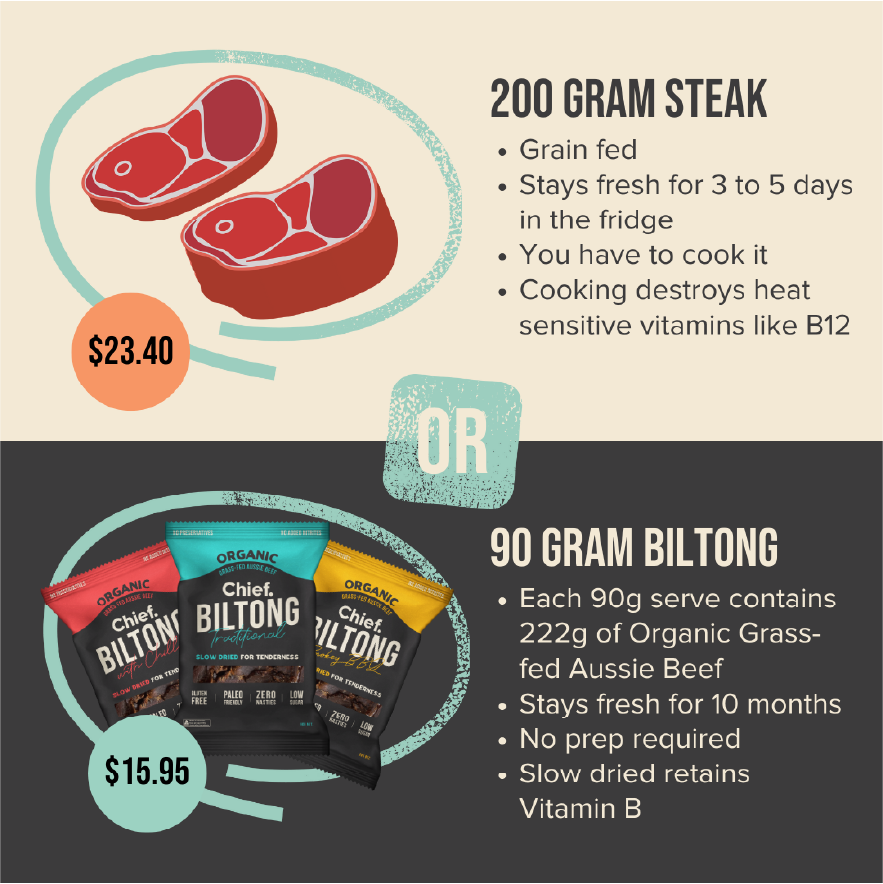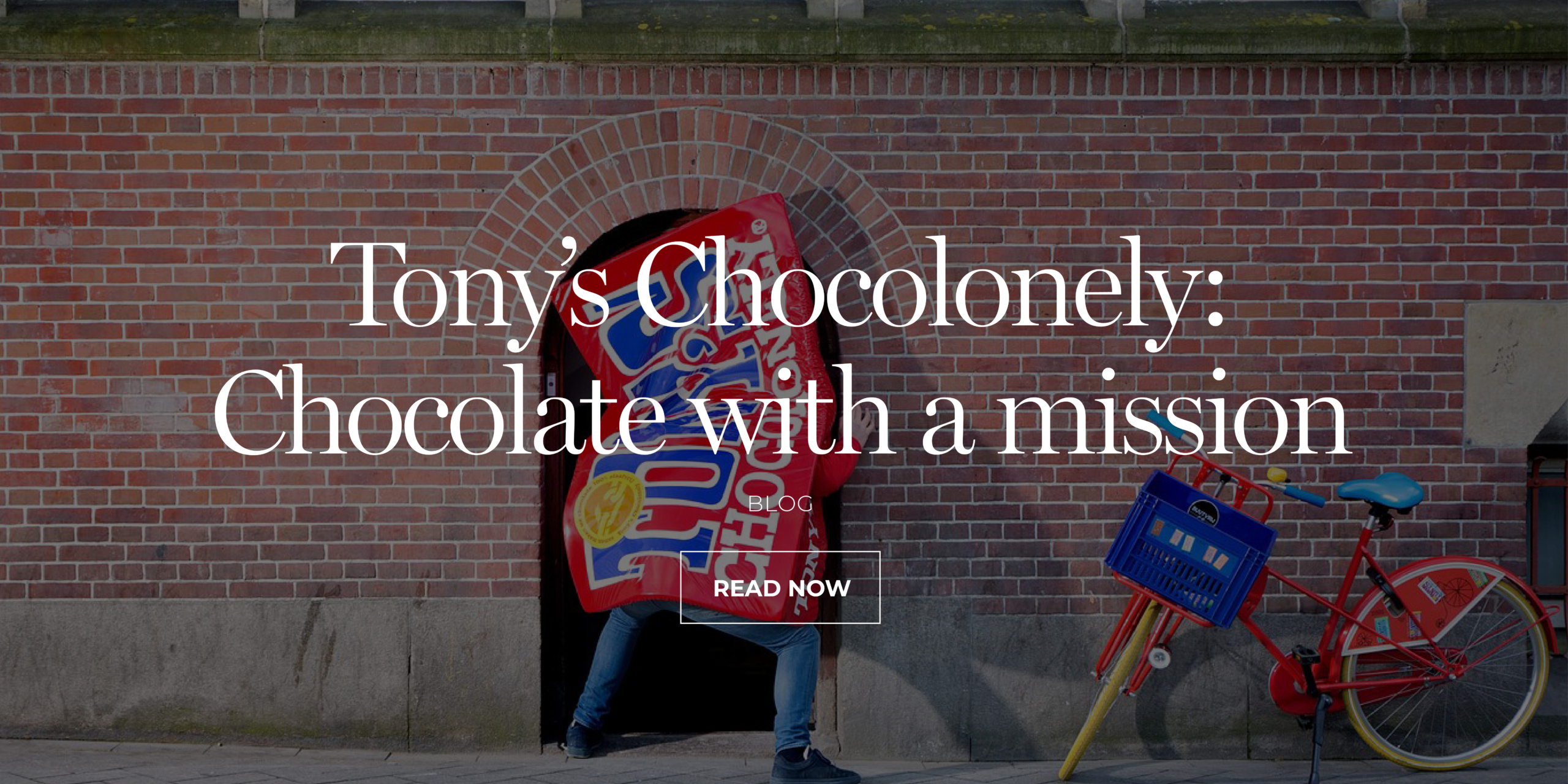As clearly mapped out by the Ellen MacArthur Foundation FMCGs and retailers can take five actions to bring nature-positive food products into the mainstream.
1. Create ambitious and well-resourced action plans to make nature-positive product portfolios a reality
2. Create a new collaborative dynamic with farmers
3. Develop iconic products to showcase the potential of circular design for food
4. Contribute to and use common on-farm metrics and definitions
5. Advocate for policies that support a nature-positive food system
Case study: Chief Nutrition
Written by Brock Hatton CEO of Chief Nutrition
Our business started like many, as a sideline business whilst we grappled with full time jobs. Through embedding sustainability as a key pillar of our brand and leveraging brand advantage our products are now sold in 12 countries and we’re on a strong growth trajectory.
As a brand our focus was always on creating healthy nutrient dense snacks. We were highly differentiated in the marketplace because we made protein bars out of Beef, but hadn’t given much thought to our sustainability past ensuring our beef supply was grass fed and grass finished.
Compared with the standard sickly sweet protein bar market we were happy being different, contrarian even, but given the increase in vegan protein options we knew there would be challenges educating consumers.
As our business grew we started being bombarded with comments about how bad our meat based products were for the environment. This forced a level of introspection and as a brand we went on a journey to understand how we could make products that were good for you and for the planet.
We started diving into our supply chain
Our beef supply was coming from a wholesaler who could source Australian grass fed beef but with no transparency as to the farm location or farming methods.
Our journey deep into our supply chain focused on three areas given how material they are to our environmental footprint and brand values. These were:
- Animal Agriculture Supply Chain
- Food Waste
- Social Impact
Animal agricultural supply chains are complex and account for a significant portion of our footprint. Across this supply chain we focused on three core areas:
- Greenhouse Gas Emissions
- Land Transformation
- Water use
Carbon Emmisions:
It’s not hard to see why consumers and policy makers alike are focussed on carbon dioxide and greenhouse gas emissions(GHG). The food, agriculture and land use industries account for 24% of all anthropogenic GHG emissions and livestock production alone is 14.5% of the total.
Much of this is attributed to the methane produced by ruminant animals but a surprising amount of this is also attributed to the growing of crops to feed to these animals. According to a report by the Food and Agriculture Organization (FAO), crop production for livestock feed accounts for around 45% of global agricultural greenhouse gas emissions.
This process of growing crops, which require fertilising, harvesting and transport is a completely backwards way of looking at animal agriculture. The report also notes that emissions from crop production for livestock feed have increased by almost 20% over the past decade, driven by a combination of increased demand for animal products and changes in agricultural practices.
Land transformation:
Land transformation refers to the process of converting natural ecosystems, such as forests and grasslands, into agricultural land for livestock grazing or crop production. This process can have negative consequences for the environment, including deforestation, loss of biodiversity and soil degradation.
The beef industry is a major driver of land transformation, particularly in developing countries such as Brazil and Indonesia, where large areas of forest have been cleared for cattle ranching. This has contributed to deforestation, which not only reduces the amount of carbon that can be sequestered in trees but also releases carbon dioxide into the atmosphere when trees are burned or decay.
Moreover, the conversion of natural ecosystems into agricultural land for livestock grazing reduces the amount of land available for wildlife habitats, resulting in the loss of biodiversity and species extinction.
Water:
The water consumption of the beef industry is calculated by considering the total amount of water used throughout the production process, including water used for raising and feeding livestock, processing meat, and irrigating crops used as feed.
Water consumption is typically broken down into to two main components: green water and blue water. Green water refers to the water that is naturally available in soil and is used by plants during photosynthesis. Blue water refers to surface and groundwater used for irrigation, animal drinking, and other purposes.
The water footprint of beef varies depending on the production system used. A study published in the journal Environmental Research Letters found that the water footprint of grass-fed beef was 50% lower than that of grain-fed beef. This was due to the fact that grass-fed cattle require less irrigation and are typically raised on pasture land that is not suitable for crop production.
In addition to consuming less water, grass-fed beef may also have other environmental benefits. For example, grasslands used for cattle grazing can help sequester carbon and promote biodiversity, which can have positive impacts on the environment.
Food waste:
The statistics around food waste are as surprising as they are scary. Food waste has significant environmental, economic, and social implications.
When food is wasted, the resources used for its production, such as water, land, and energy, are also wasted. This leads to increased greenhouse gas emissions and contributes to climate change. Food waste also represents a loss of economic value and can contribute to food insecurity and hunger if the wasted food could have been redistributed to those in need.
- 61% of the world’s food waste happens at home.
- 1.3B tons of food wasted each year.
- If food waste was a country, it would be the 3rd largest greenhouse gas emitter.
- 200 kg of food and $2,400 AUD per household is wasted every year in Australia.
Social Impact:
Linking social impacts to animal agriculture isn’t the leap that you might think. When we first started looking at the problems and possible solutions we were amazed by the statistics around the mental health impacts on farmers. This opened our eyes to this and the other social impacts stemming from our supply chain.
Farmers experience higher rates of suicide compared to the general population and struggle with mental health issues, including depression, anxiety, and stress.
Changing:
Whilst all this data is overwhelming it provided us with a way to understand the social and environmental impact of our supply chain.
Clearly the issues with beef were at the top of our list. We needed to get closer to our supply chain. Simply buying through a wholesaler without true transparency of where our beef was coming from wasn’t good enough. We focused on the following key impact areas:
- Reduce our beef’s water consumption
- Increase the opportunity for the land sequester carbon from the atmosphere
- Limit the amount of land transformation required or undertaken by our farms
- Increase biodiversity on the lands that our beef is raised
- Increase the social impact by creating additional value for farmers
In order to do this we needed to meet the following criteria:
- The beef must be grass fed and grass finished to ensure that grain wasn’t being grown to then feed the animals. This is important because it reduces the overall water consumption attributed to the beef as well as adding the health attributes of the animals.
- The beef should be raised in arid or semi arid conditions. This again minimises the total water consumption due to the exclusive use of natural rainfall rather than irrigation. The natural semi arid landscape parts of Australia are also natural grasslands which reduces impacts across land transformation and biodiversity.
- In order to sequester more carbon from the atmosphere farmers need to incorporate high rotation of cattle in cellular grazing patterns. This allows the grass to maintain a certain level of live grass above the soil level allowing it to pull more Carbon into the root system.
- After speaking to many farmers in the regenerative space we were really blown away with the impact their farming methodologies had on their mental health. Many of them spoke about the reductionist thinking they had prior to moving to regenerative practices and how they felt like they were battling with nature to produce a living. This was in contrast with a far more aligned approach and feeling of increased well being that came from regenerative farming. Not only was their well being impacted but that of their families. They felt part of a community, being involved with regenerative agriculture and they were really happy with the additional output they were able to achieve with these practices.
We’re now paying a premium for our beef but have been able to create significant nutritional and environmental value for our consumer.
Our next steps to go deeper and asses the sustainability of our products using life cycle analysis data. With this data we could maximise our impact through product level materiality assessments and track our change over time. we’re to try and become Net Zero on farm, meaning that all of the emissions produced on farm are negated through the sequestering of Carbon in the soil.
The results of the LCA were again confronting, whilst we had made significant progress with our beef supply there was still lots to be done. The most significant learning from this process was how some of the smallest ingredients by weight in our products, actually contributed the most to our environmental impact. The best examples of this are Cranberries and Cumin.
We use Cranberries in our Beef bars at a percentage of only 7% of the total weight but it contributes close to 70% of our total water consumption. It also contributed to 8% of our negative biodiversity impact. This is due to the way that Cranberries are harvested and the flooding of the fields which obviously requires a lot of water but also can drown many other species that use the fields as habitat.
Cumin is used as a spice on some of our products and again, whilst it represents a tiny amount of our finished product (less than 2%), it represents 72% of our Land Transformation and Biodiversity impact. This is due to he large amount of land that is required to produce an adequate yield. This results in the clearing of additional land by farmers to plant the spice. There is also a high amount of disease pressure on the crop so the requirement for pesticides is high.
Clear Advantages:
Attributing a direct finical ROI to environmental and social initiatives is hard. There is however a clear ROI when you step into the realms of regenerative economics and look at your business across multiple core metrics. For us these are identified as the following:
Creates a new set of metrics to judge success outside of financial standards.
- E.g Moving to Australian made collagen powder we will save 30,000 hides from going to landfill.
- Using lupin (a cover crop in regenerative farming) as a protein source we can reduce the amount of nitrogen fertiliser added to the soil by 50%.
Creates a purpose driven business environment which in itself.
- Attracts talent to our organisation
- Improved team culture
- Leads to happier clients and better relationships with suppliers
Creates a content pillar for socials and eDM’s.
- Gives this process a North Star for all innovation and line extensions.
- All new products must impact at least one environmental concern and provide clear and documented impact.
Guides our New Product Development strategy.
- We now view sustainability education as one of our roles in the F&B ecosystem. Given our ability to create revenue from content through online sales, this has the potential to create a flywheel effect and drive more educational initiatives.
SUSTAINABILITY REPORT












